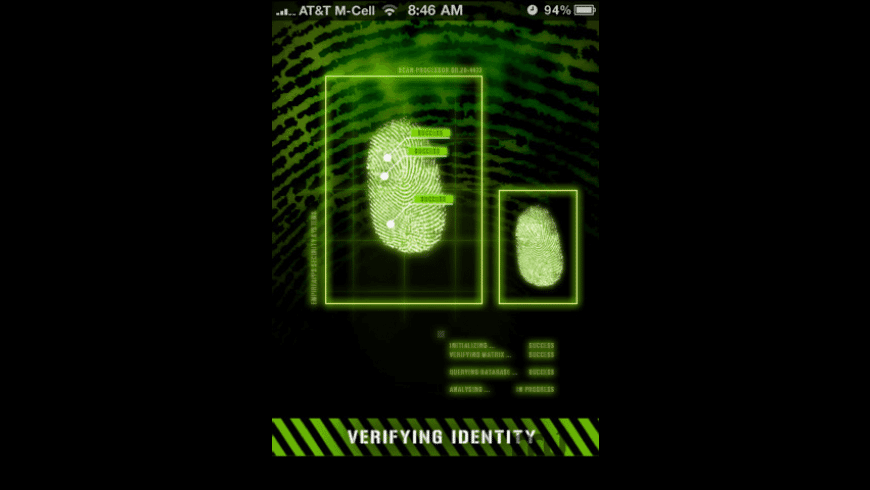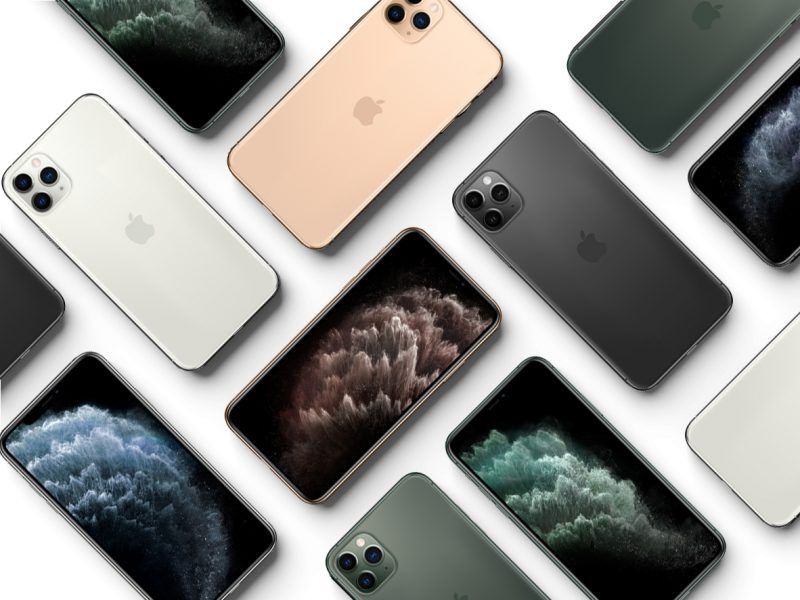If your Mac has a Touch Bar, use Touch ID preferences to enable your Mac to be unlocked with your fingerprint, add one or more fingerprints to your user account, and enable Touch ID to be used to make purchases with Apple Pay and from the iTunes Store, App Store, or iBooks Store. To open this pane.
Much of our digital lives is stored on our Apple devices, and we recommend that you always use a passcode or password to help protect this important information and your privacy. Using Touch ID on your iPhone, iPad, and MacBook Pro is an easy way to use your fingerprint instead of a password for many common operations. With just a touch of your finger, the sensor quickly reads your fingerprint and automatically unlocks your device. You can use it to authorize purchases from the iTunes Store, App Store, and iBooks Store, as well as with Apple Pay. Developers can also allow you to use Touch ID to sign into their apps.
Advanced technologies
The technology within Touch ID is some of the most advanced hardware and software that we've put into any device. The button is made from sapphire crystal—one of the clearest, hardest materials available. This protects the sensor and acts as a lens to precisely focus it on your finger. On iPhone and iPad, a steel ring surrounding the button detects your finger and tells Touch ID to start reading your fingerprint.
The sensor uses advanced capacitive touch to take a high-resolution image from small sections of your fingerprint from the subepidermal layers of your skin. Touch ID then intelligently analyzes this information with a remarkable degree of detail and precision. It categorizes your fingerprint as one of three basic types—arch, loop, or whorl. It also maps out individual details in the ridges that are smaller than the human eye can see, and even inspects minor variations in ridge direction caused by pores and edge structures.
Touch ID can read multiple fingerprints, and it can read fingerprints in 360-degrees of orientation. It then creates a mathematical representation of your fingerprint and compares this to your enrolled fingerprint data to identify a match and unlock your device. It’s only this mathematical representation of your fingerprint that is stored—never images of your finger itself. Touch ID will incrementally update the mathematical representation of enrolled fingerprints over time to improve matching accuracy.
Security safeguards
Every fingerprint is unique, so it’s rare that even a small section of two separate fingerprints are alike enough to register as a match for Touch ID. The probability of this happening is 1 in 50,000 with a single, enrolled finger. And Touch ID allows only five unsuccessful fingerprint match attempts before you must enter your password. By comparison, the odds of guessing a typical 4-digit passcode are 1 in 10,000. Although some codes, like “1234,” might be more easily guessed, there is no such thing as an easily guessable fingerprint pattern.
To start using Touch ID, you must first set up a passcode on your iPhone or iPad (or a password on your Mac). You must enter your passcode or password for additional security validation:
- after you restart your iPhone, iPad, or Mac;
- when more than 48 hours have passed from the last time you unlocked your device;
- to add or delete a fingerprint to use with Touch ID;
- to change the iPhone or iPad passcode or Mac system password, and for other security settings like FileVault on your Mac;
- when there have been more than five unrecognized Touch ID authorization attempts in a row; and
- after you log out of your Mac.
To improve security, you can choose a long, complex alphanumeric password. On your iPhone or iPad, tap ‘Passcode Options’ and select Custom Alphanumeric Code.
If your device is lost or stolen, you can prevent Touch ID from being used to unlock your device with Find My iPhone Lost Mode. Starting with iOS 7, your iPhone and iPad offer additional protection against theft with Activation Lock, which requires an Apple ID and password to turn off Find My iPhone, erase data, or reactivate your device. If your MacBook Pro with Touch ID is lost or stolen, erasing your Mac remotely also disables Touch ID.
You can also use Touch ID to purchase content from the iTunes Store, App Store, and iBooks Store, instead of entering your Apple ID password.
Touch ID can be used by multiple users on a MacBook Pro, making it easy to share a system securely. Each user account can have up to three enrolled fingerprints, and a total of five fingerprints can be enrolled across the system.
Secure Enclave
The chip in your device includes an advanced security architecture called the Secure Enclave, which was developed to protect your passcode and fingerprint data. Touch ID doesn't store any images of your fingerprint, and instead relies only on a mathematical representation. It isn't possible for someone to reverse engineer your actual fingerprint image from this stored data.
Your fingerprint data is encrypted, stored on device, and protected with a key available only to the Secure Enclave. Your fingerprint data is used only by the Secure Enclave to verify that your fingerprint matches the enrolled fingerprint data. It can’t be accessed by the OS on your device or by any applications running on it. It's never stored on Apple servers, it's never backed up to iCloud or anywhere else, and it can't be used to match against other fingerprint databases.
Learn More
Learn how to use Touch ID on your iPhone or iPad or your MacBook Pro.
Learn what to do if your device is lost or stolen.
We design Mac hardware and software with advanced technologies that work together to run apps more securely, protect your data, and help keep you safe on the web. And with macOS Catalina available as a free upgrade, it’s easy to get the most secure version of macOS for your Mac.*
Apple T2 chip.
The next generation of security.
The Apple T2 Security Chip — included with many newer Mac models — keeps your Mac safer than ever. The Secure Enclave coprocessor in the Apple T2 chip provides the foundation for Touch ID, secure boot, and encrypted storage capabilities. Touch ID gives you a seamless way to use your fingerprint to unlock your Mac, fill passwords in Safari, and make purchases with Apple Pay. Secure boot helps ensure that you are running trusted operating system software from Apple, while the Apple T2 chip automatically encrypts the data on your Mac. So you can be confident knowing that security has been designed right into the architecture of your Mac, from the ground up.
Apple helps you keep your Mac secure with software updates.
The best way to keep your Mac secure is to run the latest software. When new updates are available, macOS sends you a notification — or you can opt in to have updates installed automatically when your Mac is not in use. macOS checks for new updates every day, so it’s easy to always have the latest and safest version.
Protection starts at the core.
The technically sophisticated runtime protections in macOS work at the very core of your Mac to keep your system safe from malware. This starts with industry-standard antivirus software built in to block and remove malware. Technologies like XD (execute disable), ASLR (address space layout randomization), and SIP (system integrity protection) make it difficult for malware to do harm, and they ensure that processes with root permission cannot change critical system files.
Download apps safely from the Mac App Store. And the internet.
Now apps from both the App Store and the internet can be installed worry-free. Outlook 2016 emoji shortcuts. App Review makes sure each app in the Store is reviewed before it’s accepted. And Gatekeeper on your Mac ensures that all apps from the internet have already been checked by Apple for known malicious code — before you run them the first time. If there’s ever a problem with an app, Apple can quickly stop new installations and even block the app from launching again.
Stay in control of what data apps can access.
Apps need your permission to access files in your Documents, Downloads, and Desktop folders as well as in iCloud Drive and external volumes. And you’ll be prompted before any app can access the camera or mic, capture keyboard activity, or take a photo or video of your screen.

FileVault 2 encrypts your data.
With FileVault 2, your data is safe and secure — even if your Mac falls into the wrong hands. FileVault 2 encrypts the entire drive on your Mac, protecting your data with XTS-AES 128 encryption. And on Mac systems with an Apple T2 Security Chip, FileVault 2 keys are created and protected by the Secure Enclave for even more security.
Designed to protect your privacy.
The most secure browser for your Mac is the one that comes with your Mac. Built-in privacy features in Safari, like Intelligent Tracking Prevention, help keep your browsing your business. Automatic strong passwords make it easy to create and use unique passwords for all the sites you visit. And iCloud Keychain syncs those passwords securely across all your devices, so you don’t have to remember them. You can also easily find and upgrade any weak passwords you’ve previously used (and reused and reused and reused).
Automatic protections from harmful sites.
Safari also helps safeguard you against fraudulent websites and those that harbor malware — before you visit them. If a website seems suspicious, Safari prevents it from loading and notifies you. And when connecting to unencrypted sites, Safari will warn you. So everything you need to browse without worry is right at your fingertips.
Find your missing Mac with Find My.
The new Find My app combines Find My iPhone and Find My Friends into a single, easy-to-use app on Mac, iPad, and iPhone. Find My can help you locate a missing Mac — even if it’s offline or sleeping — by sending out Bluetooth signals that can be detected by nearby Apple devices in use. These devices then relay the detected location of your Mac to iCloud so you can locate it in the Find My app. It’s all anonymous and encrypted end-to-end so no one — including Apple — knows the identity of any reporting device or the location of your Mac. And it all happens silently using tiny bits of data that piggyback on existing network traffic. So there’s no need to worry about your battery life, your data usage, or your privacy being compromised.
Keep your Mac safe.
Even if it’s in the wrong hands.
All Mac models with the Apple T2 Security Chip now support Activation Lock — just like your iPhone or iPad. So if your Mac is ever misplaced or lost, the only person who can erase and reactivate it is you.
